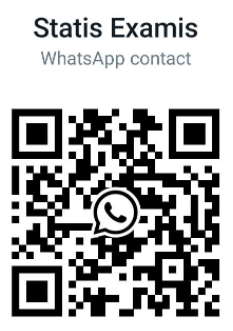Navigation » List of Schools » Pierce College » Nursing » Nursing 406 – Adult Health Care » Spring 2020 » Chapter 67 Quiz
Question #1
A Spatial-perceptual deficits.
B Right-sided paralysis.
C Left visual field deficit.
D Impulsive behavior.
Question #2
A Cardiogenic emboli
B Intracerebral hemorrhage
C Arteriovenous malformation
D Cerebral aneurysm
Question #3
A Choreiform movement and dementia
B Tremor, rigidity, and bradykinesia
C Psychosis, disorientation, delirium, insomnia, and hallucinations
D Severe dementia and myoclonus
Question #4
A Severe headache and early change in level of consciousness
B Weakness on one side of the body and difficulty with speech
C Footdrop and external hip rotation
D Vomiting and seizures
Question #5
A Ask the client if he has a headache.
B Take the client’s blood pressure.
C Ask the client if he has trouble breathing.
D Place antiembolism stockings on the client.
Question #6
A Atrial fibrillation
B Arteriovenous malformation (AVM)
C Cerebral aneurysm
D Ruptured cerebral arteries
Question #7
A Restrict fluids before surgery.
B Administer prescribed medications.
C Administer an osmotic diuretic.
D Administer preoperative sedation.
Question #8
A Limited attention span and forgetfulness
B Lack of deep tendon reflexes
C Hemiplegia or hemiparesis
D Auditory agnosia
Question #9
A cryptogenic
B small, penetrating artery thrombotic
C large-artery thrombotic
D cardio embolic
Question #10
A Dyslipidemia
B Hypertension
C Smoking
D Obesity
Question #11
A Small artery thrombotic
B Cardiogenic embolic
C Large artery thrombotic
D Cryptogenic
Question #12
A After the patient has passed the acute phase of the stroke
B After the nurse has received the discharge orders
C The day the patient has the stroke
D The day before the patient is discharged
Question #13
A Impaired Swallowing
B Risk for Fluid Volume Deficit
C Altered Nutrition:Less Than Body Requirements
D Risk forElectrolyte Imbalance
Question #14
A A 62-year-old Caucasian woman
B A 60-year-old African-American man
C A 28-year-old pregnant African-American woman
D A 40-year-old Caucasian woman
Question #15
A Supine
B Prone
C High-Fowler’s
D Semi-Fowler’s
Question #16
A You sound stressed; maybe using some stress management techniques will help.”
B This behavior is common in clients with stroke. Which does your spouse do more often? Laugh or cry?”
C Emotional lability is common after a stroke, and it usually improves with time.”
D You seem upset, and it may be hard for you to focus on the teaching, I’ll come back later.”
Question #17
A Permit friends to visit often.
B Ambulate the client every hour.
C Provide a dimly lit environment.
D Elevate the head of bed 30 degrees.
E Administer docusate per order.
Question #18
A Assist the client with feeding.
B Know this is a normal finding for CVA.
C Reposition the tray and plate.
D Perform a vision field assessment.
Question #19
A Cluster headaches can cause severe debilitating pain.
B Migraines often coincide with menstrual cycle.
C Tension headaches are easier to treat.
D Headaches are the most common type of reported pain.
Question #20
A diabetes insipidus
B cardiac disease
C hypertension
D impaired cerebral circulation
Question #21
A Visual agnosia
B Auditory agnosia
C Limited attention span and forgetfulness
D Lack of deep tendon reflexes
Question #22
A Apraxia
B Agnosia
C Perseveration
D Agraphia
Question #23
A 185 mm Hg/110 mm Hg
B 175 mm Hg/100 mm Hg
C 190 mm Hg/120 mm Hg
D 170 mm Hg/105 mm Hg
Question #24
A 12 hours
B 3 to 6 hours
C 24 to 36 hours
D 1 hour
Question #25
A Administering a stool softener
B Elevating the head of the bed to 30 degrees
C Maintaining a patent airway
D Monitoring for seizure activity
Question #26
A ticlodipine.
B aspirin.
C clopidogrel.
D dipyridamole.
Question #27
A Smoking
B Thyroid disease
C Advanced age
D Social drinking
Question #28
A Right-sided cerebrovascular accident (CVA)
B Left-sided cerebrovascular accident (CVA)
C Completed Stroke
D Transient ischemic attack (TIA)
Question #29
A Bleeding
B Hypertension
C Increased intracranial pressure (ICP)
D Headache
Question #30
A Visual and auditory agnosia
B Lack of deep tendon reflexes
C Hemiplegia or hemiparesis
D Limited attention span and forgetfulness
Question #31
A Weakness on one side of the body and difficulty with speech
B Footdrop and external hip rotation
C Severe headache and early change in level of consciousness
D Confusion or change in mental status
Question #32
A Cardiogenic emboli
B Small artery thrombosis
C Large artery thrombosis
D Cerebral aneurysm
Question #33
A Transcranial Doppler flow study
B Noncontrast computed tomogram
C 12-lead electrocardiogram
D Carotid ultrasound study
Question #34
A Cholesterol-lowering drugs
B Carotid endarterectomy
C Anticoagulant therapy
D Monthly prothrombin levels
Question #35
A Avoid certain foods.
B Eliminate use of bright lights when working.
C Perform stretching exercises and frequent position change.
D Apply cool or warm cloth to head or eyes.
Question #36
A Remove throw rugs and electrical cords from home environment.
B Need for support group due to decreased self image related to restricted mobility.
C Leg exercises to strengthen muscle weakness.
D Use of tripod cane.
Question #37
A A ruptured arteriovenous malformation will cause deficits until it is stopped.
B Thrombolytic therapy has a time window of only 3 hours.
C A ruptured intracranial aneurysm must quickly be repaired.
D Intracranial pressure is increased by a space-occupying bleed.
Question #38
A Perseveration
B Agnosia
C Apraxia
D Agraphia
Question #39
A Speak at all
B Form words that are understandable
C Comprehend spoken words
D Form words that are understandable or comprehend spoken words
Question #40
A Contact the appropriate agencies so that they can provide care after discharge.
B Suggest that the family members speak with the physician about their concerns.
C The nurse should do nothing because she is responsible only for inpatient care
D Inform the case manager of the family’s concern and provide information about the client’s current clinical status so appropriate resources can be provided after discharge.
Question #41
A Decreased level of consciousness (LOC)
B Decreased heart rate
C Increased urine output
D Elevated blood pressure
Question #42
A Test the gag reflex before offering food or fluids
B Assist the client with meals.
C Place food on the affected side of the mouth
D Allow ample time to eat.
Question #43
A Diphenhydramine (Benadryl)
B Heparin
C Lioresal (Baclofen)
D Pregabalin (Lyrica)
Question #44
A TIA
B bruit
C diplopia
D atherosclerotic plaque
Question #45
A Functional recovery usually plateaus at 6 months.
B Main presenting symptom is an “exploding headache.”
C It is caused by a large-artery thrombosis.
D One of the main presenting symptoms is numbness or weakness of the face
Question #46
A Left-sided stroke
B Transient ischemic attack
C Right-sided stroke
D Cerebral aneurysm
Question #47
A Take medication just before going to bed at night
B Take medication only during the morning when it’s calm and quiet.
C Take medication as soon as symptoms of the migraine begin.
D Take medication only when migraine is intense
Question #48
A Intracranial hemorrhage
B Age 18 years or older
C Ischemic stroke
D Systolic blood pressure less than or equal to 185 mm Hg
Question #49
A Sit with the client for a few minutes
B Inform the nurse manager.
C Call the physician immediately.
D Administer an analgesic.
Question #50
A Frontal
B Occipital
C Temporal
D Parietal
Question #51
A Diastolic pressure of 110 mm Hg
B Heart rate of 100
C Systolic pressure of 180 mm Hg
D Respiration of 22
Question #52
A Double vision
B Numbness of an arm or leg
C Severe headache
D Dizziness and tinnitus
Question #53
A Carotid Doppler
B Noncontrast computed tomography
C Transcranial Doppler studies
D Electrocardiography
Question #54
A upon transfer to a rehabilitation unit
B after 1 week
C in 2 to 3 days
D immediately
Question #55
A Every hour
B Every 45 minutes
C Every 15 minutes
D Every 30 minutes
Question #56
A Provide a high-fat diet.
B Always serve hot or tepid foods.
C Include dry or crisp foods and chewy meats.
D Provide thickened commercial beverages and fortified cooked cereals.
Question #57
A Apraxia
B Perseveration
C Agraphia
D Agnosia
Question #58
A 8.3 mg
B 10 mg
C 7.5 mg
D 6.3 mg
Question #59
A Scotoma
B Diplopia
C Homonymous hemianopsia
D Nystagmus
Question #60
A A TIA is an insidious, often chronic episode of neurologic impairment.
B When symptoms cease, the client will return to presymptomatic state.
C Two thirds of people that experience a TIA will go on to develop a stroke
D Symptoms of a TIA may linger for up to a week.
Question #61
A physical therapist
B chaplin
C spouse
D home care nurse
Question #62
A Advanced age
B Obesity
C Hypertension
D Atrial fibrillation




